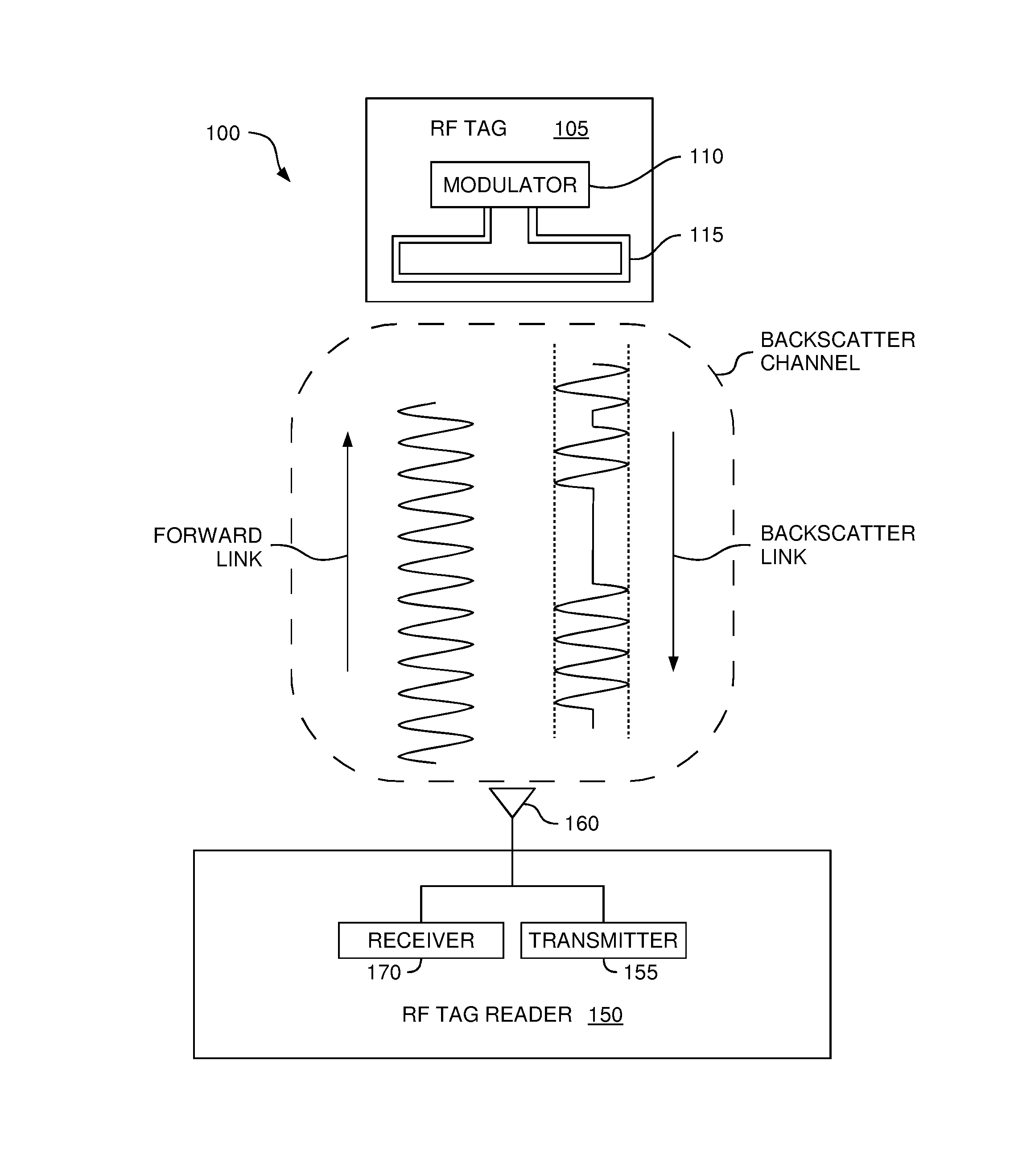Phase-based ranging for backscatter RFID tags
a phase-based ranging and backscatter technology, applied in the field of identifying the location of an rf tag, can solve the problems of poor accuracy, conventional ranging techniques, and poor accuracy of receiving signal strength (rss) for either active or passive rf tags, and achieve the effects of reducing the effect of errors, reducing errors, and reducing errors
- Summary
- Abstract
- Description
- Claims
- Application Information
AI Technical Summary
Benefits of technology
Problems solved by technology
Method used
Image
Examples
Embodiment Construction
[0019]Identifying a distance between a RF tag and a receiver antenna of a RF tag reader (referred to herein as a “separation distance”) may include combining different phase-based ranging techniques. However, the different ranging techniques come with different advantages and disadvantages. Continuous-wave (CW) radar offers up to millimeter precision but suffers from cycle ambiguity (i.e., the measured distance is based on a wrapped phase rather than an unwrapped phase). Multi-frequency continuous-wave (MFCW) radar, on the other hand, estimates the separation distance using the difference between two wrapped phases, which results in a distance measurement that does not have a cycle ambiguity as long as the distance is less than the MFCW ambiguity distance. However, the MFCW estimated distance may be too inaccurate for certain uses. Instead of relying on only one of the ranging techniques, in one embodiment, the CW and MFCW techniques are used in tandem. Specifically, the tag reader ...
PUM
 Login to View More
Login to View More Abstract
Description
Claims
Application Information
 Login to View More
Login to View More - R&D
- Intellectual Property
- Life Sciences
- Materials
- Tech Scout
- Unparalleled Data Quality
- Higher Quality Content
- 60% Fewer Hallucinations
Browse by: Latest US Patents, China's latest patents, Technical Efficacy Thesaurus, Application Domain, Technology Topic, Popular Technical Reports.
© 2025 PatSnap. All rights reserved.Legal|Privacy policy|Modern Slavery Act Transparency Statement|Sitemap|About US| Contact US: help@patsnap.com



